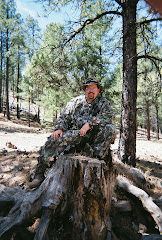
Cold and silent, Morning stirs
Eyes still closed, beginning to think about opening
A cold wind blows down the hill and then fades.
In the stillness a deeper chill sets in, her eyes begin to open/
The big pines cut through the dim sky,
dark, still, black sentinals silently suggest she is near.
An owl speaks to the night asking that dark mistress to stay.
A woodpecker shatters the owls plea and all the forest knows she will soon come./
Then she opens her eyes.
A coyote rushes to find a dark hole to crowd into.
A chipmunk chirps again and again in his impatience for her embrace.
Her fiery gaze lights the tops of the tall pines on fire./
All the creatures of the day come to meet her.
An elk barges through the forest following his harem
His crown lit with orange flame.
Aloof in his glorious realm ./
Then she kisses me.
Warm at first on my cheek and then on my lips.
She cozies up to me and whispers coyly,"I want to show you something".
And then she kisses me again./
Then she is passed
and day appears
Morning is gone./











